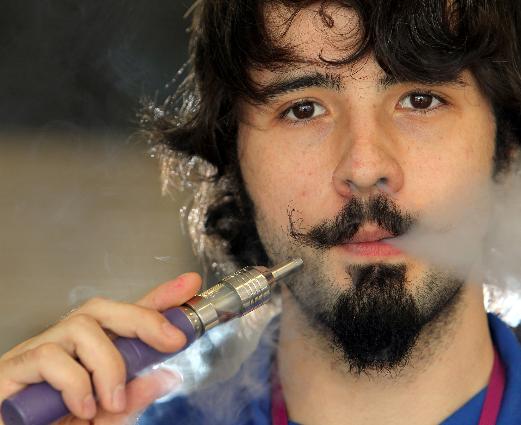Major cancer groups call for e-cigarette research, regulation
By John Nielsen, ScienceInsider
One telling sign of the popularity of electronic cigarettes, or e-cigarettes, which allow users to inhale nicotine vapors without other harmful chemicals, arrived late last year: The editors of the Oxford Dictionaries declared “vape” their Word of the Year for 2014.
Today, e-cigarettes earned another kind of notice: Two of the largest cancer science and treatment groups in the United States called on the government to start regulating “electronic nicotine delivery systems” and step up research on the health effects of vaping.
“While e-cigarettes may reduce smoking rates and attendant adverse health risks, we will not know for sure until these products are researched and regulated,” said Peter Paul Yu, president of the 35,000-member American Society of Clinical Oncology, in a statement. “We are concerned that e-cigarettes may encourage nonsmokers, particularly children, to start smoking and develop nicotine addiction.” His group was joined by the American Association for Cancer Research, which has more than 33,000 members.
The joint statement endorsed the urgent need for new research into the health effects of e-cigarettes and using tobacco tax revenues to help fund studies. It also included a long list of recommended actions by state and federal government agencies. They include requiring makers of e-cigarettes to register their products with the Food and Drug Administration (FDA), to identify the chemicals and levels of nicotine in various brands, and to agree to help stop teenagers from vaping.
In April 2014, FDA issued a proposal to start regulating e-cigarettes. The proposal would require FDA reviews of e-cigarette products and force makers to stop claiming health benefits until the science is in. The rule would also ban the distribution of free samples of e-cigarettes and vending machine sales. Health warnings would be mandatory. FDA has not finalized the rules, however, and researchers and health professionals say they hope today’s statement will highlight the need to move quickly.
“As someone who runs a treatment program for tobacco addicts, I would love to be able to endorse the use of e-cigarettes as an alternative,” says Michael Steinberg of the Robert Wood Johnson Medical School at Rutgers University, New Brunswick, in New Jersey. “But I cannot do that because we don’t know the risks involved, nor can we be sure that moving to e-cigarettes really helps people stop smoking.” Steinberg says it could turn out that smokers who start vaping tend to end up using both e-cigarettes and flammable ones or that the nicotine produced by e-cigarettes is unexpectedly toxic.
Some researchers worry that any new rules won’t go far enough, soon enough. Neither the FDA proposal nor today’s joint statement calls for a ban on television advertising by e-cigarette makers, for example, notes Stanton Glantz, director of the Center for Tobacco Control Research and Education at the University of California, San Francisco. (Glantz, a frequent critic of the health claims made by makers of e-cigarettes, says he supports such a ban.) There’s also no mention of regulating e-cigarette “flavorings,” such as minty or fruity flavors, which were banned from cigarettes after they were linked to elevated smoking rates among teenagers.
Glantz also worries that it could be years before FDA fully regulates the devices. “It’s an especially torturous political and legal process at the federal level,” he says. Regulations may be easier to finalize on the state and local level, he adds, noting that several states and cities have already imposed restrictions. “I would look for progress at the local level,” Glantz says. “I expect that in this case the most important changes will start at the bottom, not the top.”
In the meantime, e-cigarettes are becoming increasingly mainstream. The small, battery-powered devices first became readily available in the United States in 2006, and sales rose to about $2 billion in 2014 alone. “Vaping” bars where people speak of “vapers’ rights” are popping up in towns and cities. Movie stars have advertised their vaping skills on late-night television talk shows.
This past December, a survey released by the National Institute on Drug Abuse reported that 17% of high school seniors said they’d vaped at least once a month, compared with 14% percent who admitted to smoking. Vaping among 10 graders, at 16%, was more than twice the rate of smoking. Antismoking activists found these reports alarming, arguing that vaping could become a “gateway habit” that could draw nonsmokers toward cigarette use.
http://news.sciencemag.org/health/2015/01/major-cancer-groups-call-e-cigarette-research-regulation


